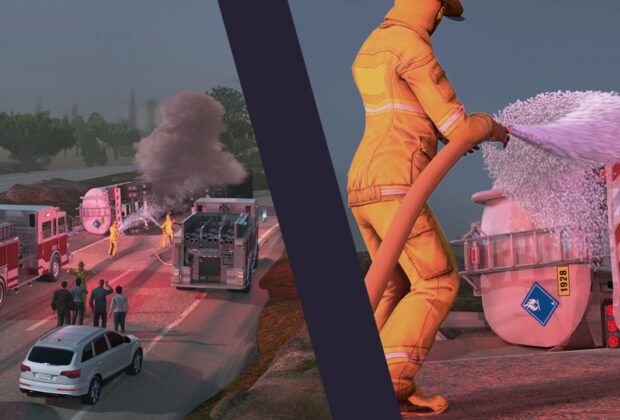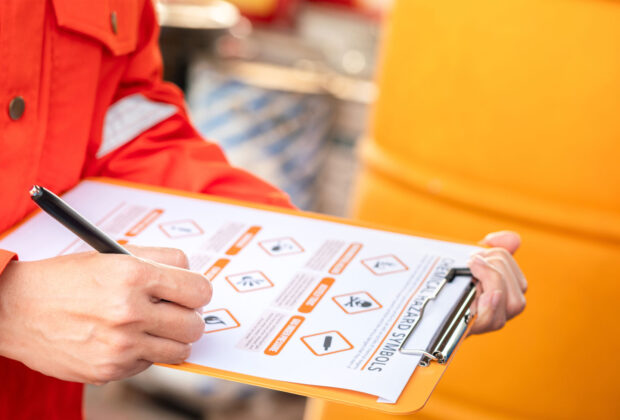Construction work is dangerous and is one of the most hazardous industries in Canada. Workers face daily risks from falls, heavy equipment, electrical exposure, and toxic materials. Without proper construction site safety training, these risks cause serious injuries and deaths.
Recent data shows construction had 183 workplace deaths in 2022. Falls injure over 40,000 Canadians every year. Each number represents a real worker, family, and tragedy we can prevent.
Comprehensive safety training is the key to stopping these deaths. It teaches workers to spot hazards, use protective gear correctly, and follow safe procedures. This training helps them identify dangers before incidents happen.
Top 6 Construction Hazards: Prevention Checklist
Here’s how effective safety training helps reduce the biggest risks on Canadian worksites:
✅ Falls from Height
- Train all workers on fall protection
- Inspect harnesses, lanyards, connecting components, and anchors every day
- Install guardrails, scaffolding, or safety nets
- Teach safe ladder and platform use
Training Requirements: In Canada, fall protection training is generally required for workers who may be exposed to a fall hazard of 3 metres (10 feet) or more, or at any height where a fall could cause serious injury.
✅ Getting Hit by Equipment
- Train equipment operators and spotters to communicate clearly
- Make workers wear high-visibility gear in equipment zones
- Keep walkways separate from equipment areas
- Check that all machine guards are mitigating these hazards and stay in place
Best Practice: Companies that track operator certifications see major drops in equipment incidents and close calls.
✅ Electrical Dangers
- Provide electrical safety training for workers near live facilities
- Check cords, tools, and electrical panels daily
- Always follow lockout/tagout rules
- Train workers about arc flash and shock risks
Safety Fact: Electrical safety training reduces workplace electrical incidents and helps workers spot dangers faster.
✅ Dangerous Chemicals (WHMIS & TDG)
- Get WHMIS and TDG training for workers handling and transporting chemicals
- Keep safety data sheets (SDSs) and TDG Regulations current and easy to find
- Store and package chemicals and dangerous goods safely and in accordance with manufacturer’s recommendations
- Teach workers how to handle spills in their roles
Results: Companies with strong chemical training programs pass safety inspections and handle chemicals more safely.
✅ Digging and Heavy Lifting
- Train workers on ground disturbance before digging near utilities
- Teach safe lifting and rigging methods
- Inspect cranes, excavators an all equipment before each use
- Only let trained operators run heavy equipment
Why It Matters: Ground disturbance training prevents utility strikes. Trained workers spot hazards better, follow the damage prevention process, and dig safely.
✅ Breathing Hazards
- Provide workers with respiratory protection around dust and fumes
- Test air quality in enclosed spaces
- Keep ventilation systems working properly
- Teach workers to choose, fit, and maintain respirators
- Use water and barriers to control dust
Health Protection: Respiratory training prevents long-term health problems from silica dust, asbestos, and welding fumes on construction sites.
Why Construction Safety Training Works
Proper construction site safety training does more than meet regulations and compliance requirements.
- Stops incidents and injuries before they happen
- Builds skills to recognize, assess, control, and evaluate hazards
- Creates responsibility where everyone cares about and contributes to worksite safety
- Provides proof of training that supervisors can verify quickly
- Meets standards set by standard-setting bodies and ensures compliance with regulators
Protect Your Worksite Today
You can manage every construction hazard with the right knowledge and preparation. Danatec offers complete construction safety training. Our courses cover fall protection, electrical safety, chemical handling, and ground disturbance. All courses meet Canadian standards and work on any device.
Ready to improve your safety program? Talk to our team for any questions you have including bulk discounts or browse our courses to find the right training for your team.




Comments are closed.